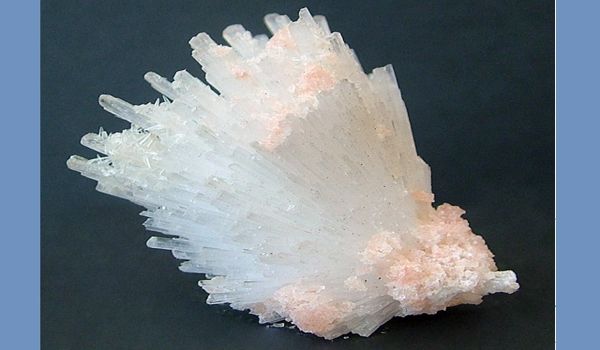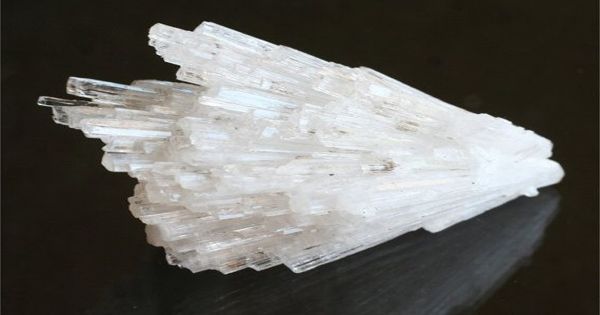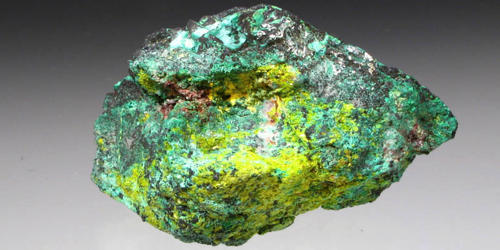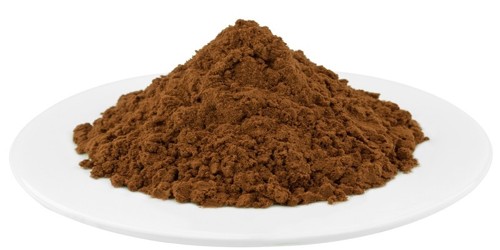Natrolite is a tectosilicate mineral species belonging to the zeolite group. It is a common member of the zeolite group and is known for its needle-like crystal habits. It is hydrated sodium and aluminum silicate with the formula Na2Al2Si3O10•2H2O. It can be pale pink, colorless, white, red, gray, yellow, or green. The type locality is Hohentwiel, Hegau, Germany.
Natrolite is a zeolite that has been found in Australia, Germany, India, Russia, the Czech Republic, and the USA. It was named natrolite by Martin Heinrich Klaproth in 1803. The name is derived from natron (νατρών), the Greek word for soda, in reference to the sodium content, and lithos (λίθος), meaning stone.
General Information
- Category: Tectosilicate
- Formula: (repeating unit) Na2Al2Si3O10•2H2O.
- Crystal system: Orthorhombic
- Crystal class: Pyramidal (mm2)
- Formula mass: 380.22 g/mol
- Color: White, colorless, sometimes pink

Properties
Natrolite is usually white or colorless, but sometimes reddish or yellowish. The luster is vitreous, or, in finely fibrous specimens, silky. The specific gravity is 2.2, and the hardness is 5.5. The mineral is readily fusible, melting in a candle-flame to which it imparts a yellow color owing to the presence of sodium. It is decomposed by hydrochloric acid with the separation of gelatinous silica.
- Crystal habit: Acicular
- Twinning: On {110}, {011}, {031}
- Cleavage: Perfect on {110}
- Fracture: Irregular, uneven
- Tenacity: Brittle
- Mohs scale hardness: 5-6
- Luster: Vitreous, Silky, Pearly
- Streak: White
- Diaphaneity: Transparent to translucent
- Specific gravity: 2.25
Occurrences
Natrolite occurs with other zeolites in the amygdaloidal cavities of basaltic igneous rocks. It is also common in nepheline syenites. It has been found in the form of colorless or white, glassy, slender crystals or fibrous masses filling cavities or fissures in basaltic rocks, as in Trentino, Italy; Brevik, Nor.; Belfast, N.Ire.; the Faroe Islands; and northeastern New Jersey, U.S. Natrolite is found in cavities or fissures in basaltic rocks, volcanic ash deposits, and veins in granite, gneiss, and other rocks. It also occurs in altered syenites, aplites, and dolerites.
Natrolite crystals are generally long and slender, with vertical striations and a square cross-section. Needle stone or needle-zeolite are other informal names, alluding to the common acicular habit of the crystals, which are often very slender and are aggregated in divergent tufts.
Information Source:
















